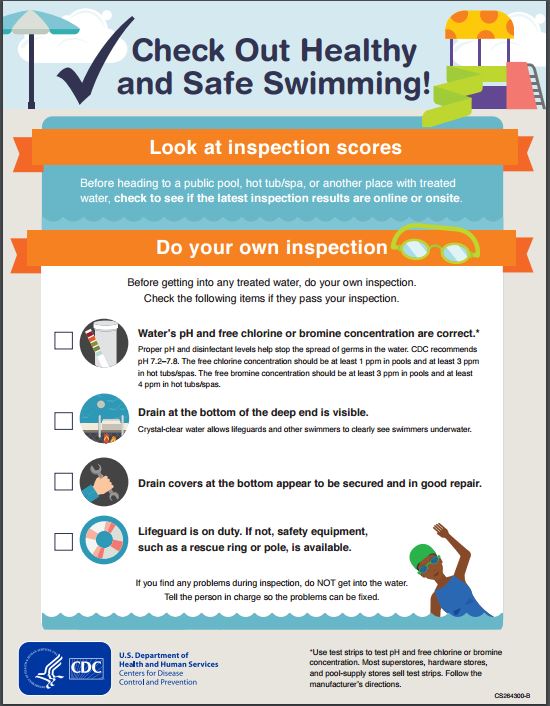CDC finds health problems are common at public pools; state requires local health departments to inspect each one twice a year

Kentucky Health News
Thousands of public pools, hot tubs and water playgrounds are forced to close every year for serious health and safety violations, according to a new study by the federal Centers for Disease Control and Prevention.
Kentucky requires local health departments to conduct two full inspections of each public swimming pool during the operating season, once every six months for its continuous-operation indoor facilities, and monthly water chemistry inspections, according to the state Department for Public Health.
“The local health department environmentalists are the ones who do these inspections and monitors, so the records for these inspections are kept with each local health department, Beth Fisher, spokesperson for the Cabinet for Health and Family Services, said in an e-mail.
But you might want to do your own inspection if you go on vacation out of state, because that’s not the case everywhere.
“Almost one third of local health departments do not regulate, inspect, or license public pools, hot tubs, and water playgrounds,” Michele Hlavsa, chief of the CDC’s Healthy Swimming Program, said in a news release. “We should all check for inspection results online or on site before using public pools, hot tubs, or water playgrounds and do our own inspection before getting into the water.”
And even if states are checking their pools, that doesn’t mean they are always safe.
A 2013 CDC study of inspection data from the five large states containing 40 percent of the nation’s public aquatic venues found that almost 80 percent of them had at least one violation. It found that one in eight inspections resulted in immediate closure because of serious health and safety violations and that one in five kiddie or wading pools were closed due to violations. Most of the violations were related to improper pH (15 percent), lack of proper safety equipment (13 percent) and inadequate disinfectant levels (12 percent).
“Young children who are still learning their toileting skills are more likely to contaminate the water. They’re more likely to swallow the water. Both of which can lead to outbreaks of diarrheal illness,” Michael Beach, the CDC’s associate director for healthy water, told Dennis Thompson at HealthDay News. He said pH levels are “critical because it determines how effective the disinfectant is killing germs.”
The CDC recommends that parents change their infants’ diapers often and in the bathroom, not poolside, to take children to the bathroom every hour, and to teach children to spit out any pool water they get in their mouth.
Beach said most contamination of public pools and hot tubs are the result of people swimming while suffering from diarrhea. He said adults should not swim while recovering from diarrhea, and if they do, should shower before getting in the water.
The CDC recommends individuals do a self-inspection of all public pools before getting in them and offers this checklist that identifies some of the most common swimming pool health and safety problems:
- Use a test strip (available at most superstores or pool-supply stores) to determine if the pH and free chlorine or bromine concentration are correct.
- Make sure the drain at the bottom of the deep end is visible.
- Check that drain covers appear to be secured and in good repair.
- Confirm that a lifeguard is on duty at public venues. If not, check whether safety equipment like a rescue ring with rope or pole is available.
If you find problems, do not get into the water and tell the person in charge so the problems can be fixed, says the release.
